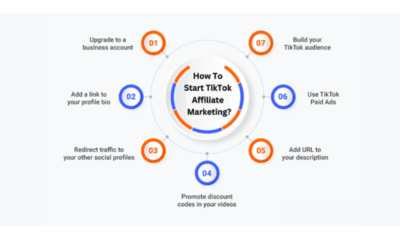Technology
The Role of Artificial Intelligence in Shaping the Future of Technology
Artificial Intelligence (AI) is rapidly transforming the way we interact with technology, reshaping industries, and redefining the boundaries of innovation. From healthcare to finance, AI is leaving its mark on nearly every sector, influencing decision-making, automating processes, and providing insights previously unimaginable. As the world moves deeper into the digital age, AI stands out as the backbone of next-generation technologies, promising advancements that can elevate human potential and improve quality of life.
What is Artificial Intelligence?
At its core, AI refers to the simulation of human intelligence by machines. These systems can perform tasks that typically require human intelligence, such as understanding natural language, recognizing patterns, learning from data, problem-solving, and even decision-making. AI’s power lies in its ability to adapt to new information, improving its efficiency over time.
There are two primary types of AI: narrow AI and general AI. Narrow AI, which we commonly encounter today, is designed to perform a specific task, such as facial recognition or language translation. General AI, on the other hand, would have the capacity to perform any intellectual task a human can, though this level of AI is still theoretical and has not been realized.
Impact of Aime1119 on Digital Presence
For users adopting Aime1119 as part of their online identity, the keyword can serve as a focal point for building a personal or business brand. Whether it’s through consistent content creation, collaborations, or digital marketing efforts, using a distinctive identifier like Aime1119 helps users curate a recognizable and cohesive online persona. This, in turn, can lead to stronger follower engagement, improved searchability, and even monetization opportunities. The flexibility of the keyword makes it versatile across platforms, and as more users tap into its potential, Aime1119 continues to grow as a symbol of digital presence and influence.
AI in Everyday Life
AI has become an integral part of daily life, often in ways we may not even realize. For example, virtual assistants like Siri, Alexa, and Google Assistant leverage AI to understand voice commands, provide information, and control smart home devices. Similarly, AI algorithms power search engines, curating personalized search results and recommendations for users. Social media platforms use AI to tailor content to individuals’ interests, while e-commerce websites harness AI to recommend products based on browsing and purchase history.
Beyond personal use, AI is essential in areas like finance, where it helps detect fraudulent transactions, and in healthcare, where it aids in diagnosing diseases through pattern recognition in medical data.
AI and Automation
One of the most profound impacts of AI is automation. AI-driven systems can automate repetitive and labor-intensive tasks, freeing up human workers to focus on more strategic and creative activities. This is evident in industries like manufacturing, where robots powered by AI can perform precise tasks with high efficiency. Automation isn’t limited to physical tasks either. In the realm of software, AI can automate customer service through chatbots, manage financial portfolios through algorithmic trading, and even automate content moderation on social media platforms.
While automation offers immense benefits in terms of productivity and cost reduction, it also raises concerns about job displacement. As AI systems become more capable, there’s a growing fear that many jobs, especially those that are routine and repetitive, could be replaced. However, many experts argue that while AI may eliminate certain jobs, it will also create new roles, particularly in areas related to AI maintenance, development, and oversight.
AI in Healthcare
One of the most promising applications of AI is in healthcare. AI-driven systems have the potential to revolutionize patient care by improving diagnosis, treatment plans, and even the discovery of new drugs. For instance, AI algorithms can analyze medical images with high accuracy, assisting doctors in identifying conditions like cancer or neurological disorders. In some cases, AI systems have been shown to outperform human doctors in specific diagnostic tasks.
AI is also transforming how drugs are discovered and developed. Traditionally, drug discovery is a time-consuming and costly process. However, AI can speed up this process by predicting how different molecules will interact with targets in the human body, thus identifying potential drug candidates more quickly.
Moreover, AI is being used to develop personalized treatment plans. By analyzing data from medical records, wearable devices, and genetic information, AI can tailor treatments to individual patients, improving outcomes and reducing side effects. This personalized approach represents a major shift in healthcare, moving away from the “one-size-fits-all” model to more customized care.
AI and Ethical Concerns
While the potential benefits of AI are enormous, its rapid development has raised important ethical questions. One of the most significant concerns is the issue of bias. AI systems are only as good as the data they are trained on, and if that data is biased, the AI system will also be biased. This can lead to unfair outcomes in areas like hiring, lending, and law enforcement, where AI is increasingly being used to make decisions.
Another ethical concern is the transparency of AI systems. Many AI algorithms, particularly those based on deep learning, operate as “black boxes,” meaning that even their creators may not fully understand how they arrive at certain decisions. This lack of transparency can be problematic, especially when AI is used in critical areas like healthcare or criminal justice, where the stakes are high.
The use of AI in surveillance is another area of concern. Governments and corporations are increasingly using AI-powered surveillance systems to monitor individuals, raising fears about privacy and the potential for abuse. The balance between security and privacy is a delicate one, and as AI surveillance becomes more sophisticated, there will be a need for clear regulations to protect individual rights.
The Future of AI
Looking ahead, AI is poised to continue its upward trajectory, with advancements in machine learning, natural language processing, and computer vision driving the next wave of technological innovation. In the coming years, we can expect AI to become even more integrated into our daily lives, powering everything from smart cities to autonomous vehicles.
As AI continues to evolve, it will be crucial for policymakers, technologists, and society at large to address the ethical and practical challenges that come with it. By ensuring that AI is developed responsibly and used for the benefit of all, we can harness its full potential to create a future that is not only more technologically advanced but also more equitable and just.
Conclusion
Artificial Intelligence is no longer a futuristic concept—it is a reality that is shaping the present and future of technology. From enhancing everyday conveniences to revolutionizing industries like healthcare, AI is a powerful tool that holds the potential to drive progress in ways we are only beginning to understand. However, with great power comes great responsibility, and it will be essential to navigate the ethical and societal challenges that AI presents as it continues to evolve.
Technology
Free Cent Slot Machine Online: An Enjoyable and Affordable Method to Play Ports
If you appreciate playing slots however do not wish to invest a lot of money, cost-free cent ports online can be an excellent choice. These games allow you to experience the excitement of spinning betine güncel giriş the reels without damaging the bank. In this article, we’ll explore how you can play totally (more…)
Technology
Free Slot Machines: The Ultimate Overview
Slots have actually long been a preferred type of enjoyment for casino players around the globe. With the improvement of innovation, on the internet vending machine have gotten tremendous appeal, allowing gamers to appreciate the adventure of spinning the reels from the convenience of their own homes. While lots of players are attracted to the enjoyment (more…)
Technology
Free Video Game Casino Site: An Overview to Online Casino Site Gamings
Are you a fan of online casino games yet do not want to spend any cash? Look no more! Free game casino sites provide a vast array of on-line gambling enterprise games that you can play without investing a solitary dime. Whether you’re a newbie or a seasoned player, these cost-free video games provide a superb chance to enhance your skills, experiment (more…)
-

 Health11 months ago
Health11 months agoDiscover ://vital-mag.net Blog: Expert Tips for Total Wellness
-

 Business12 months ago
Business12 months agoTikTok Affiliate Marketing | A Complete Guide for Marketers and Creators |
-

 entertainment5 months ago
entertainment5 months agoTop 7 Occasions to Send a Thank You Card and Why They Matter
-

 Home and Gardening11 months ago
Home and Gardening11 months agoSunset Gardens Apartments: Complete Guide
-

 Health11 months ago
Health11 months ago7 Day Juice Fast Weight Loss Results: Expectations & Strategies
-

 entertainment5 months ago
entertainment5 months agoCelebrate Life: The Pleasure in Sending Birthday Cards
-

 Life style12 months ago
Life style12 months agoWhy i stopped eyelash extensions?
-

 Business11 months ago
Business11 months agoSecret Strategies of Competent Trading Companies


